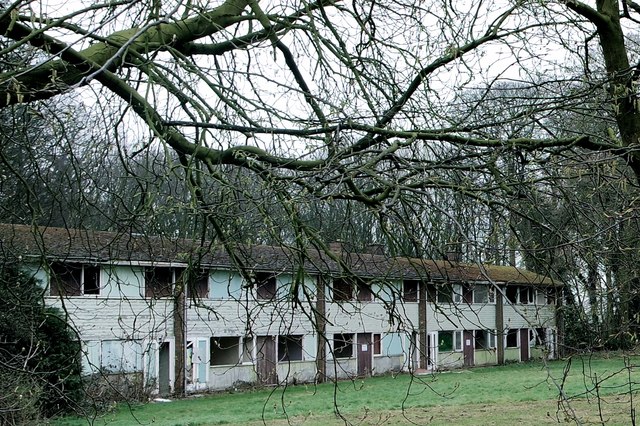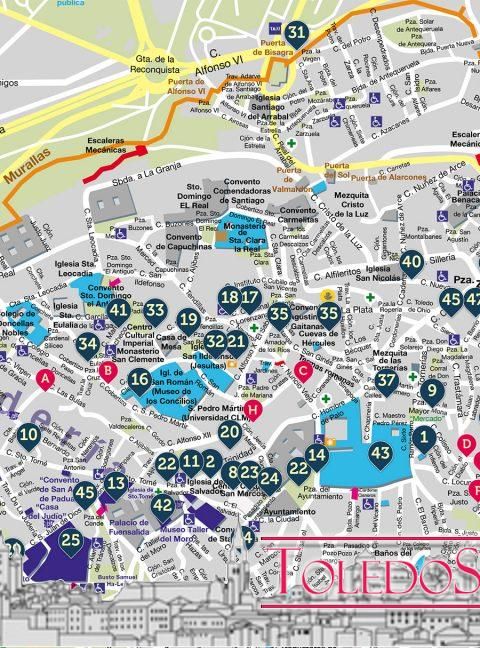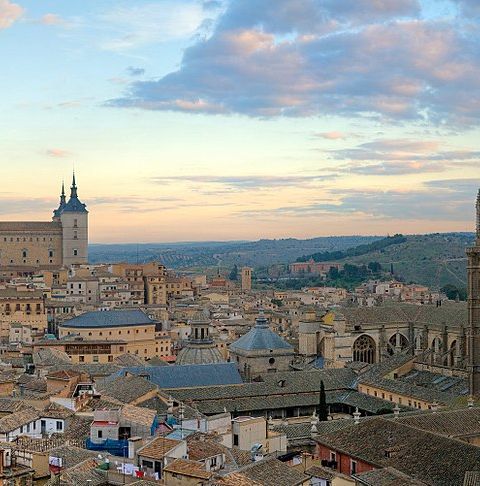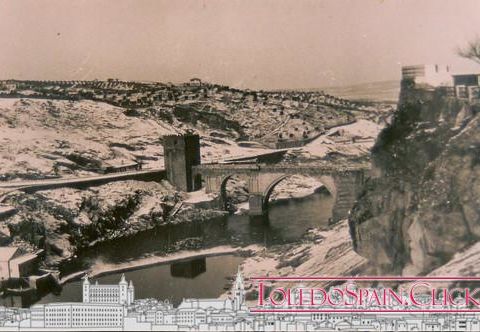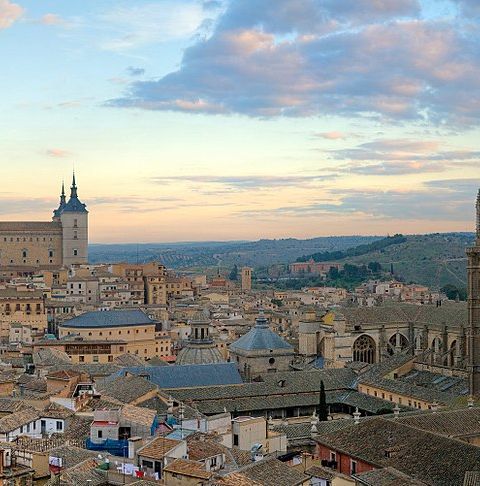As you know, we are working on the book “Hidden and Secret Toledo” (Hidden and Secret Toledo), but we don’t stop visiting places… We want to share with all of you one of the articles that this future publication might (or might not) include. On this occasion dedicated to one of the topics that we are passionate about: the abandoned spaces in the city. In this case, the cinema “Alcántara” in the Barrio de Santa Bárbara, the only room “X” that existed in Toledo.
Two enormous “arc” projectors that occupy a small room, extinguished, silent…, one of them covered like a corpse, that until the year 92 worked fed by coal electrodes, which, located in the lantern of the projector received electric current and generated a voltaic arc that radiated a very powerful white light, producing a smoke that was extracted by a chimney…

The OSSA 60A projector with open flashlight.
Preparing and assembling the film rolls that arrived in sacks at the nearby train station from Madrid, after the due previous projections in the capital (and sometimes after the passage through censorship) was a complicated job, typical of artisans, as it took Antonio to scrape the film and paste on it with acetone the beginning of the other roll “so that the public would not notice the changes.
With all this we find ourselves when Antonio, the current owner of the “Cine Alcántara “that already belonged to his father, Antonio Sánchez Sánchez, receives us and allows us access to a closed space 20 years ago and that is preserved intact, as a still photo, in the neighborhood of Santa Bárbara in Toledo.
- “In the movie I made a small scratch mark to know when the roll ended and I had to change it.” He told us remembering part of his life, with no little emotion Antonio Sanchez (son).
- People didn’t notice anything but when that little mark appeared on the screen I knew I had to go up. With time, and when I had projected the same film 20 times, I already knew the dialogues or the music and I knew when to go up to make the change.
Antonio and his father, now deceased, accumulated thousands of screenings in the Cine Alcántara, at number 18 Cabrahigos Street. A building that has miraculously survived the real estate speculation of past years, intact since 1992 when it closed its doors to the public, live performances and rallies:
– “Here have come politicians of all colors, without distinction. Especially in the transition.”
Antonio preserves numerous anecdotes worthy of being remembered in broader documents than the one we are dealing with here:
– “We opened the room in 1962. In the 1970s, there were very successful films, especially those that were not well seen by the regime at the time or those that had some kind of slightly more “spicy” content. Musical films also had a lot of audience in those years. I remember how once, with films with political content during the transition, people would stand up and applaud, and we were very afraid of all that.
 Prices of Alcántara Cinema in Toledo
Prices of Alcántara Cinema in Toledo
Innumerable curiosities are preserved in this unique space: intercoms, numerous posters of extraordinarily preserved films from the 60s to the 80s, prices and tickets…
 Alcántara Cinema Intercom in Toledo
Alcántara Cinema Intercom in Toledo
The Cine Alcántara had two enormous projectors, which “facilitated” the projection of films without the classic “cut” that was used by the public to go to the bathroom, to buy some trinkets or even “to take a walk by Zocodover” as some older people remember what happened with the Cine Imperio, totally disappeared and replaced by another building not many years ago.
A few years later, with the arrival of the cinema “in relief” as it is called by Antonio (what we now call 3D), the screen had to be painted with a silver coating, as it is conserved today. It was the only cinema with this “quality” in Toledo.
Numerous memories crowd into Antonio’s words. Like the performances of groups of young Toledans on a wooden stage that still stands under the screen and the enormous noise caused by a drum in the soundproofed room “my father said they threw the building at us”.
Or the importance of the “rows of the one-armed “(the last of the room), in which curiously a person of a certain stature only saw part of the screen, since the upper tribune covered a large part of it “but they cared little, that’s why they called the rows of the one-armed, they were elsewhere”.
Precisely about this we discovered in an interesting article in the magazine edited by the Centro de Mayores “Toledo – I” in November 2011 the memories of one of its partners called Moisés Carrasco Escribano about the cinemas of Toledo and to which we recommend to dedicate a few minutes. There he mentions the neighbourhood cinemas that existed in Toledo until the 1980s and which have been replaced by modern shopping centres on the outskirts of the city:
“” You remember that as kids there were only two movie theaters in Toledo, the Modern (near Palo Man) and the Empire, then came the Alcazar (on the slope of the Alcázar) and the Teatro de Rojas was used as a movie theater. Apart from these memories as a child, I went to the cinema in the Marist Brothers’ College and to the PAX cinema, in a hall of the Archbishop’s Palace which was accessed from Trinidad Street. Then there were the summer cinemas, such as Miradero, on Avenida Barber and the popular cinema of the Fábrica de Armas and later the María Cristina, next to the Plaza de Toros”
.
 Toledo Modern Cinema
Toledo Modern Cinema
Eduardo from “Toledo Olvidado” sends us this exterior photograph of “Cine Moderno”
” On Sunday, September 30, 1983, the cinemas Moderno and Alcazar were closed with the film “The Violinist on the Roof”. On April 30, 1992, the cinema Empire was closed with the film “Dangerously Together”.
José Luis López also points out in the Facebook of Hidden and Secret Toledo that he knew another cinema in Toledo, the “Doméstico “: ” in a residence of nuns at the end of the street of Santo Tomé, almost at the corner with that of the Angel, being this one of the most peculiar, that being a residence of nuns no sinful act was allowed, which meant that if in the film some kiss came out (it was more unthinkable) someone (I suppose some nun) covered the projector with his hand so that we could not see it
In the 1980s, VHS video arrived, television spread through all homes at a dizzying speed, and cinemas quickly lost the importance they had in previous decades. Morning sessions, doubles, “premieres” (previously premiered in Madrid) disappear, and many are being turned off.
The Cine Alcántara, trying to fight against the closure decides to take the difficult decision to screen Cine “X” in a city as small and “religious” as Toledo.
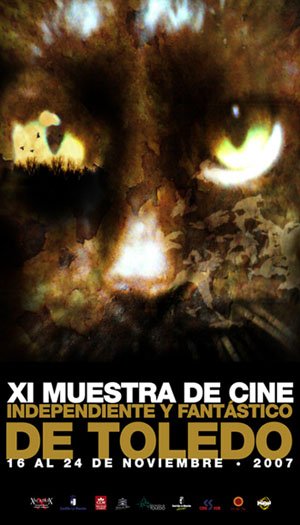 Cine Alcántara in Toledo, an entry when it was Sala X
Cine Alcántara in Toledo, an entry when it was Sala X
The “what will they say” ends with this adventure soon. In Toledo we all know each other. After two hours we slowly left the room, again we turned off the lights, which cost to turn on, leaving behind the 332 well-preserved armchairs covered with plastic and wallpaper walls that moisture has already begun to destroy… We closed again the doors of the last neighborhood cinema that hides Toledo.
One less secret to discover.
 Patio de Butacas del Cine Alcántara in Toledo
Patio de Butacas del Cine Alcántara in Toledo

